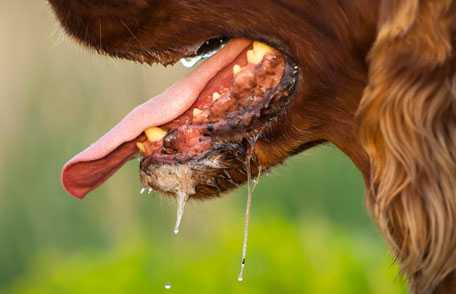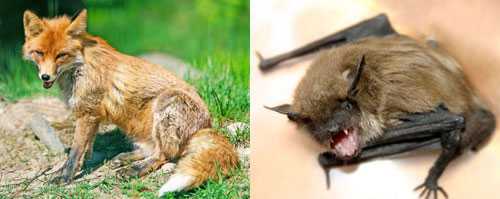The Burden of Rabies

Learn how to help prevent rabies, a deadly virus that threatens the health of people and animals.
Rabies is a dangerous virus that is spread through the saliva of animals sick with rabies. Anyone can get it if they handle or get bitten by an animal that has the disease.
Rabies in the U.S.
Rabies continues to be a serious threat to the health of people and animals. Every year, about 40,000 people receive a rabies prevention treatment called post-exposure prophylaxis (PEP) because they had contact with potentially rabid animal.
More than 90% of all rabid animals reported to CDC each year occur in wildlife. The animals that get rabies the most are raccoons, skunks, foxes, and bats. However, most people in the U.S. get PEP due to close contact with domestic animals such as cats or dogs.

In the U.S., the animals that get rabies the most are raccoons, skunks, foxes, and bats.

Rabies cases among dogs and cats reported in the U.S. from 2010 to 2015.
Rabies in Cats
While dogs have historically been associated with spreading rabies to people, more cats than dogs are reported rabid in the U.S. each year. Cats are often in close contact with both people and wild animals, including those that primarily spread rabies, like raccoons and bats. Thus rabies may be more easily spread to people from cats.
Over the past few years, public health officials saw a small decrease in the number of reported cases of rabid cats. However, in 2014, over four times more rabid cats were reported than rabid dogs. Importantly, cat owners are less likely to visit a veterinarian’s office, where they can get their cat shots that can keep it safe from rabies. According to the American Veterinary Medical Association (AVMA), only 55 percent of U.S. cat owners visited a veterinarian in 2011, a significant decrease compared with 64 percent in 2006. This is much less compared to dog owners (81 percent in 2011 and 83 percent in 2006).
Protecting You and Your Family
The best ways to protect yourself and your family from rabies is to:
- Vaccinate your pets and other domestic animals (like cows, goats, sheep, and horses)
- Avoid contact with wild animals – do not feed or handle them, even if they seem friendly. If you see a wild animal acting strangely, report it to animal control.
If you or someone in your family is exposed to a rabid animal, rabies can be prevented through a series of shots called rabies post-exposure prophylaxis (PEP).
If you are bitten by any animal (domestic or wild):
- Immediately wash the wound well with soap and water and see a healthcare provider
- Contact animal control to assist in capturing the animal for observation or rabies testing
Family pets can get rabies if they are bitten by rabid wild animals.
Cats, dogs, and ferrets that have not gotten their rabies shots and are bitten by an animal may have to be quarantined for six months or euthanized. In general, pets have a higher risk of coming into contact with wild animals that may have rabies than people do. This increases the risk of rabies to us because of our close contact with our pets.
To help reduce this risk:
- Visit your veterinarian with your pet on a regular basis and keep rabies vaccinations up-to-date for all cats, ferrets, and dogs.
- Maintain control of your pets by keeping cats and ferrets indoors and keeping dogs under direct supervision when outdoors.
- Spay or neuter your pets to help reduce the number of unwanted animals that may not be properly cared for or vaccinated regularly.
- Call animal control to remove all stray animals from your neighborhood since these animals may be unvaccinated.
- Do not feed or water your pets outside and keep your garbage securely covered. These items may attract wild or stray animals.
- Page last reviewed: September 25, 2017
- Page last updated: September 25, 2017
- Content source:
- National Center for Emerging and Zoonotic Infectious Diseases
- Page maintained by: Office of the Associate Director for Communication, Digital Media Branch, Division of Public Affairs




 ShareCompartir
ShareCompartir